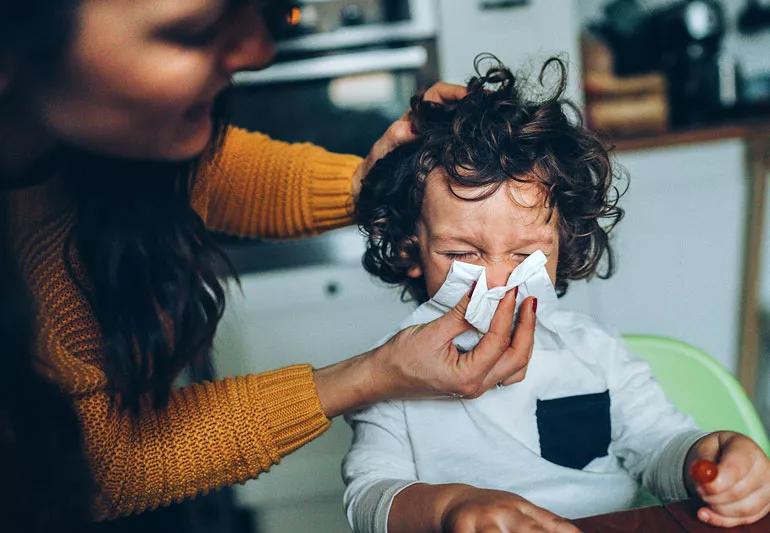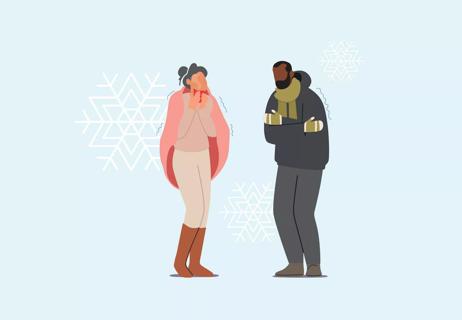Similar symptoms, different treatments

Welcome to cold and flu season. (Reminder: It’s not too late to get your flu shot!)
Advertisement
Cleveland Clinic is a non-profit academic medical center. Advertising on our site helps support our mission. We do not endorse non-Cleveland Clinic products or services. Policy
If your little one is already sniffling, coughing and sneezing, you might wonder whether it was a virus or bacteria that got them sick, and what you can do to help.
Sometimes the symptoms of viral and bacterial infections seem the same, but there’s a big difference between the two, and they’re treated differently, explains Frank Esper, MD, a pediatric infectious disease specialist.
Most often, it’s a virus that’s to blame for a child’s cough, sore throat or mild fever, he says. And the best thing to do is to let the illness run its course.
“For the most part, viruses go away on their own, as your immune system is more than enough to take them out,” he says.
But when a fever gets especially high, suspicion might shift to a bacterial infection. “With bacteria, a lot of times we use antibiotics for those, because bacterial infections can be more severe,” Dr. Esper explains.
While it can be frustrating for parents to learn that an antibiotic won’t help their child with a viral infection feel better, Dr. Esper says that overusing antibiotics, especially when they’re not useful, is problematic.
When we overuse antibiotics, the bacteria that they are meant to treat become more resistant, and those antibiotics are no longer useful.
Plus, Dr. Esper says, antibiotics can also destroy “good” bacteria in the gut, which can cause stomach and gastrointestinal upset.
Advertisement
“Your gut is full of bacteria — but, antibiotics do not know friend from foe,” he explains.
“It will kill the bad bacteria that’s causing a sinus infection, but it will also kill the good bacteria that’s in your gut that’s there to help you digest.”
If you’re unsure whether a child has a viral or bacterial infection, Dr. Esper said the best thing to do is to call their pediatrician.
He also reminds parents that any time a baby younger than 2 months old develops a temperature above 100.4, they should be seen by a physician.
Advertisement
Learn more about our editorial process.
Advertisement

Symptoms can overlap and be hard to distinguish, but there are some telltale differences

The flu, RSV, COVID-19, pneumonia and more typically circulate during cold weather months

The advice dates to 1574, but it doesn’t quite meet modern medical guidelines

Ultimately, the best medicine for a cold is time, fluids and rest

From garlic to elderberry, here’s how not to get rid of a cold

Colder temps bring flu worries, fall allergies, dry skin and more

You can’t cure it, but you can manage the symptoms

Here’s one TikTok trend you shouldn’t try

Type 2 diabetes isn’t inevitable with these dietary changes

Applying a hot or cold compress can help with pain